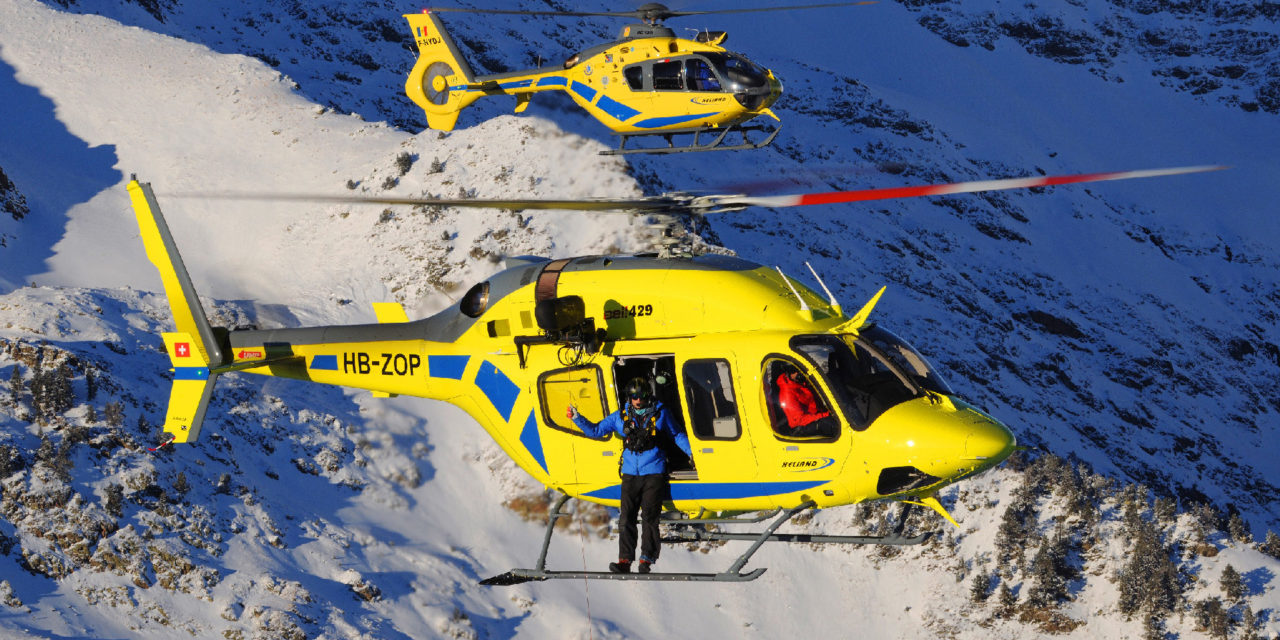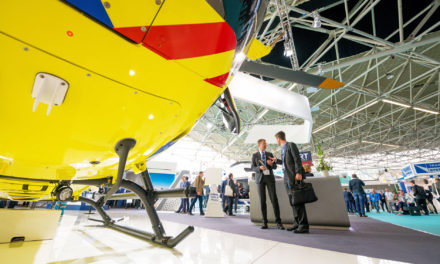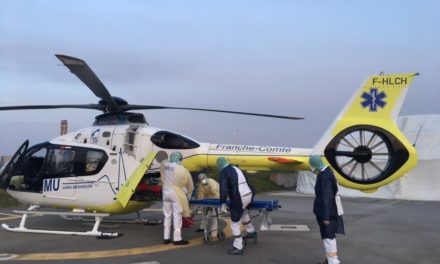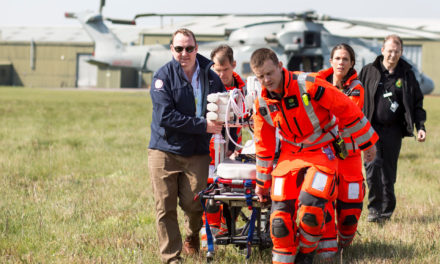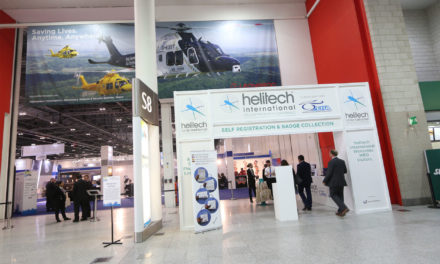Pioneering aerial work in the Principality of Andorra, Heliand nowadays provides a service on demand for tourists and local administrations. Exclusively operating Eurocopter/Airbus products until recently, the company has just received a Bell 429, a significant move for this small fleet.
A business still on the make
Established in December 1987, Heliand operates in the Principality nested between France and Spain. Staffed by about ten, it currently flies three helicopters used for a large range of aerial missions: one AS 350 B3 Ecureuil, one EC 135P2+ and a brand new Bell 429 delivered last December, directly from Bell’s Prague factory. Historically, the flying activity started with an AS 350 B2 and a Lama, choices perfectly suited to this specific environment, with the Lama being the perfect mountain drudge.
Jordi Duera, full-time pilots with Heliand, recalls the first years: “Back then, when there was a need for a chopper, we were used to calling abroad, to Héli-Union for instance. Then two Andorran partners decided to purchase helicopters. The first one was an Ecureuil B2, followed by the Lama. Both machines were flying all over the country, the Ecureuil specializing in rescue, when the fire brigade called for support, for example. After a few years, the government realized they actually needed their own helicopter because mountain rescue was becoming more demanding. That’s when they signed the first contract between Heliand and the Government of Andorra, to have a helicopter exclusively dedicated to state missions.” The contract was signed at the end of the 1990s, because “with the new aviation regulations, Andorra had to get a twin-engine machine to be allowed to land on the roof helipads of the Barcelona and Toulouse hospitals, the two nearest major cities. The Lama was replaced by a factory new EC 135, keeping the Ecureuil for mountain jobs. They were very happy with the Lama but it was a single-engine helicopter increasingly expensive to operate and quite noisy. So the 135 was exclusively devoted to medical flights, but also to mountain SAR with the fire brigade’s Intervention Team.”
Up in the Mountains
With its capital city Andorra-la-Vella being the highest in Europe, at 1,020 meters of elevation (3,360 ft), the 180-square miles principality is landlocked between France and Spain, but it is not part of the European Union. The average elevation is 1,997 m (6,549 ft) with large slopes running down along three major valleys descending from fourteen mountain summits exceeding 2,500 m of height. The highest mountain is the Coma Pedrosa, reaching 2,942 m (9,652 ft) above the capital. Now that the stage is set, one can easily understand the importance of helicopters, for the authorities and local businesses and tourists alike.
The evolution of the flying rules applied to public service missions – particularly when the helicopter had to fly abroad and adding to flying operations unique in Andorra – led the company to opt for a new helicopter: “Our current helicopter was often limited when operating in high and hot conditions. With more and more restrictive rules, we had to cut on fuel each time we had to go abroad and it became a serious limitation when flying to Barcelona in summer. We had to fill our tanks there, with all the local technical and administrative hassles it means.”
A unique setting
Three helicopters were shortlisted by Heliand, the H135 (formerly EC 135P3), the H145 and the Bell 429. “We are two full-time pilots here and we decided that one of us would evaluate the Airbus machines and the other the Bell. Our job was to collect all the data and come back with a proposal. I’m the one who went to Switzerland at Zermatt’s to try the Bell in real conditions, as close as possible to our requirements. There I was very positively surprised.” After a very strict selection process, the Bell made a real difference in terms of payload and gross performances. “This twin-engine helicopter replaces our EC 135P2+ for all missions encompassed in our contract with the Andorran government. It is much more powerful, perfectly suited for mountain flying under strong winds, it has a larger cabin and latest-generation avionics featuring autopilot.”
It is above all a matter of context because the Bell 429 operating framework is very specialized and diversified, with the lowest altitude flooring at 3,000 feet! Certified in Europe with a maximum take-off weight of 3,175 kg (7,000 lb), this machine provides a safe margin perfectly suited to mountain flying: “Basically, this helicopter is much more powerful but it is certified 300kg (661 lb) under its actual capability. So when we take-off from the Andorra hospital helipad, it flies like a jetplane, whether it’s hot or windy. Of course, with its weight restriction, once you have loaded the equipements, the patient, the medical team, the fuel… we almost reach the certified MTOW. On paper, the margin is narrow and we must count every kilogram. But then, the helicopter lifts like a feather and we feel very safe, even when flying on one engine.”
Ergonomic and intuitive
The pilots really like the way the user-friendly interface was designed. “The Swiss team at Zermatt helped us a lot. They trained us and pointed at the features incorporated by Bell when they designed their helicopter. Bell listened carefully to what the mountain pilots wanted and there are small details where you say “OK, we really like this”, like the anti-torque rotor which is very efficient and reactive [the first 4-blade on a Bell helicopter]. The pilot interface is very intuitive with its screens and systems, very easy to understand. The avionics suite integrates a Flight Limitation Indicator, an all-in-one needle displaying the first data reaching the red zone between torque, engine temperature and Measured Gas Temperature. It allows the pilot to read only one indicator for three hard limitations. On my first flight, the instructor told me “since you already know the B3, I start your helo to save time and you’ll see, the 429 will come to you easily”. I had never flown this model in my life but he was right: I found everything naturally, it was very easy to take control.”
Selecting this machine generated many constraints in regards to aerial regulation because on top of the type certifications, the company also had to pass the operation certifications: “Andorra is not part of ICAO but we must comply with all regulations. So we had to partner with a company already fully certified in our range of operations. When changing the type, it is very complicated to update all the procedures. You need to get new manuals, adapt to a new machine, requalify the pilots and the maintenance crew… it really makes things harder to move to Bell. So as we had to get all the proper certifications, we selected the registration directly in regard to the operator we needed to partner with. SAF was not interested to have a Bell in their fleet, due to the above issues. So we turned to a Swiss firm, Lions Air based in Zurich, who was fully certified for HEMS, Hoist (Special Operations for lifting and aerial works) and NV (night flying under NVG). Above all, they had a Bell in their fleet. It all went very smoothly, they are real pros and we got along very well, so we purchased the helicopter and we registered it under their AOC certificate. Now we have this Swiss machine flying in Andorra.”
Optimized Fleet
All the people taking part in the flying operations are very happy, both at Heliand and with the Andorran administrations. The mission scope is crystal clear for all: “The crew always consists of two, a pilot and a task specialist. The Bell is strictly for government service when it comes to SAR, HEMS, firefighting and public service such as shelter support, snow condition control and layer measuring, assistance to mountain trackers… everything tagged public sector. Regarding our commercial activities, one of the Ecureuil is used for all aerial works: lifting, construction, ski lifts… we fly a lot for heli-ski in winter and heli-bike in summer, these activities really are developing. Another Ecureuil will replace the 135 but it will be mainly used for VIP transport, sightseeing flights and airport shuttles to and back from Toulouse and Barcelona.”
Between diversity and complexity in a mountainous environment very demanding on machines, Heliand has found the perfect helicopter to meet the requirements of its main contract, in full compliance with the regulations of both neighboring countries, with increased creature comfort and with a very safe margin for safety. This twentieth HEMS Bell 429 delivered in Europe sure has many flying hours looming ahead.
© Samuel Prétat – May 2018
The authors gratefully thank the team at Heliand for their full assistance in presenting their helicopters and the company activity. Gràcies per la vostra benvinguda i la vostra ajuda!

